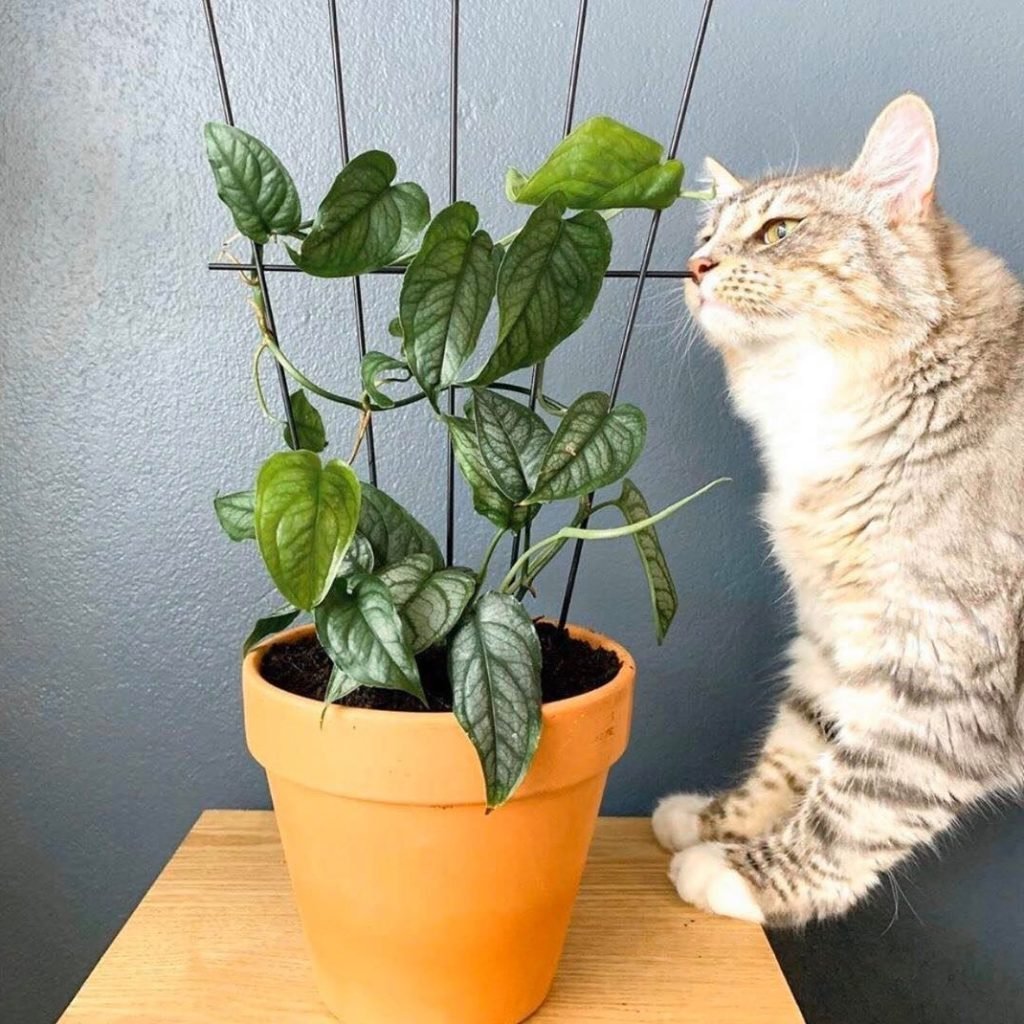Philodendron are one of the most popular house plants as there’s a huge variety in all different shapes and sizes. Not only are they popular, they’re super easy to look after and most of them can tolerate low light conditions which makes them perfect for some of those low light spots in your home or office.
Do Philodendron Like to be Root Bound?
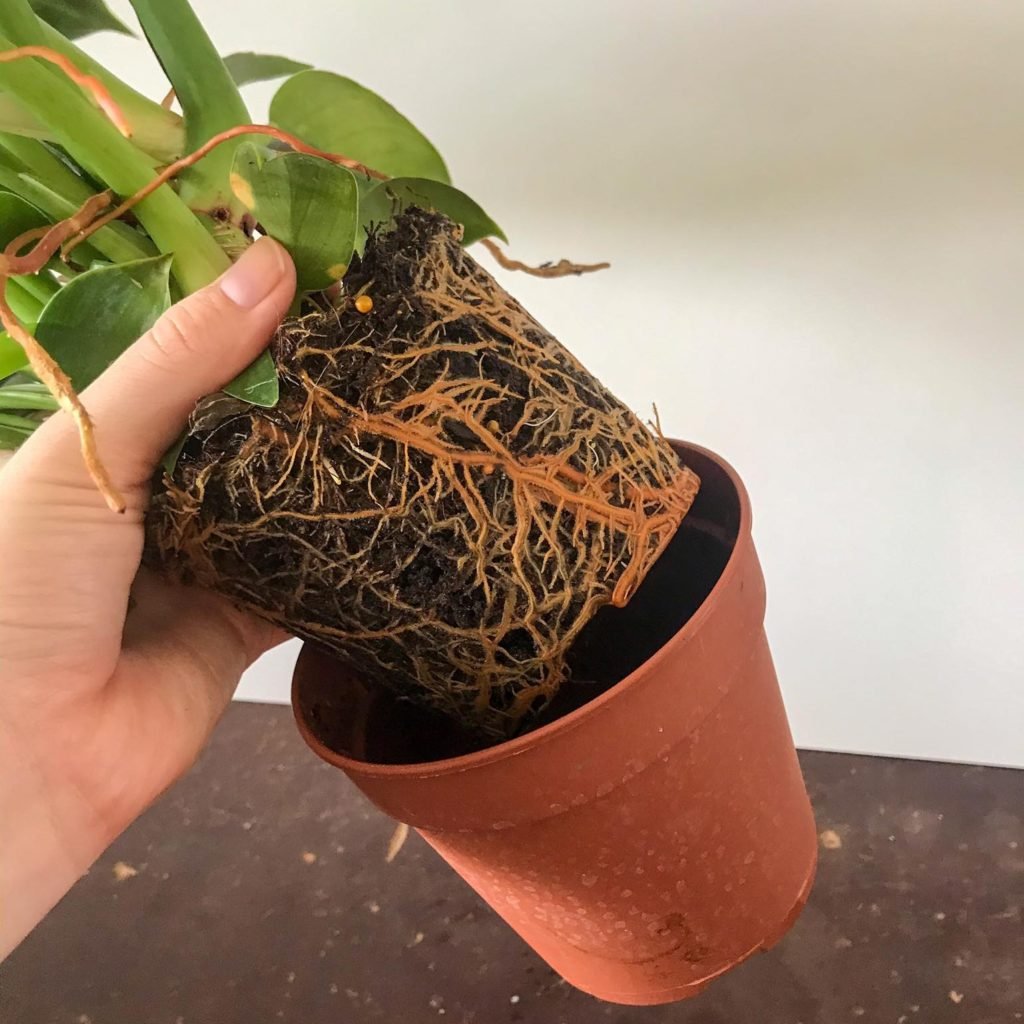
Repotting your Philodendron will assist in keeping them from becoming root bound. While philodendron can tolerate being root bound, they don’t really like it. Repotting your plant more frequently will assist in healthy new growth.
If you think your plant could be root bound but you’re not sure because you can’t see any roots showing underneath the pot, you can look out for some of these signs.
Symptoms that your plant could be root bound is yellowing or browning of the leaves or the plant wilting quicker than it usually would after waterings. Often the symptoms are just the plant looking like it’s not getting enough water.
When Should I Repot My Philodendron?
You should repot your Philodendron in early Spring when they are coming out of dormancy. Otherwise, a sign that you need to repot your philodendron is if you can see roots coming out from the bottom of the pot. Another sign that your Philodendron needs to be repotted is if you notice your plant needing to be watered more often than usual as that can be a symptom of your plant being root bound and ready for a new pot.
What Type of Soil do Philodendron Like?
Philodendron like a loose, well draining soil. A good potting soil to use is one that has a mixture of peat moss, perlite and soil.
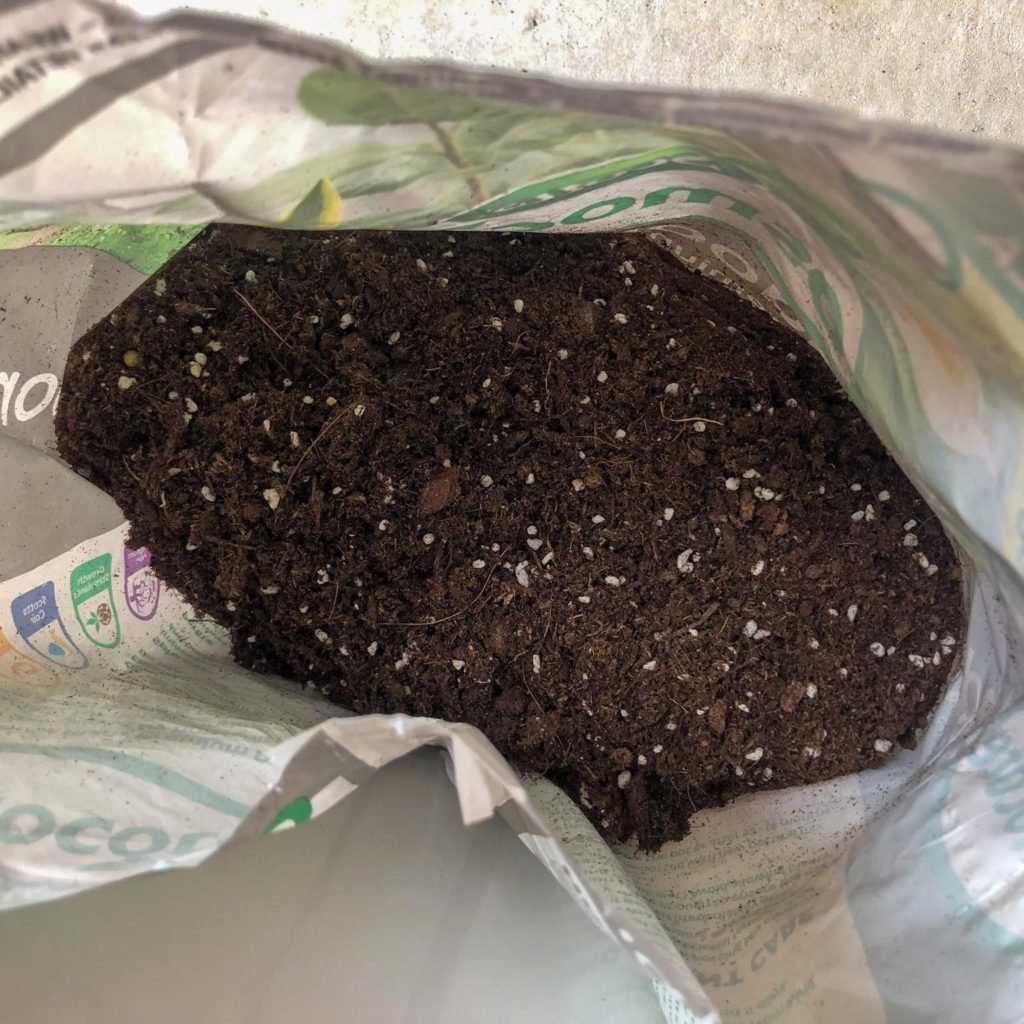
Perlite helps improve the aeration and provides drainage while the peat moss holds moisture and only releases the moisture to the plants roots when it needs it. Peat moss also holds onto the nutrients that are in the soil instead of it being washed away when the plant gets watered.
The potting soil that I currently use is Scotts Indoor Plants Premium Potting Mix (although most indoor plant specific soils work great) but if you prefer to make up a mix of your own, you can try doing one part perlite, one part peat moss and one part potting soil.
How to Repot a Philodendron
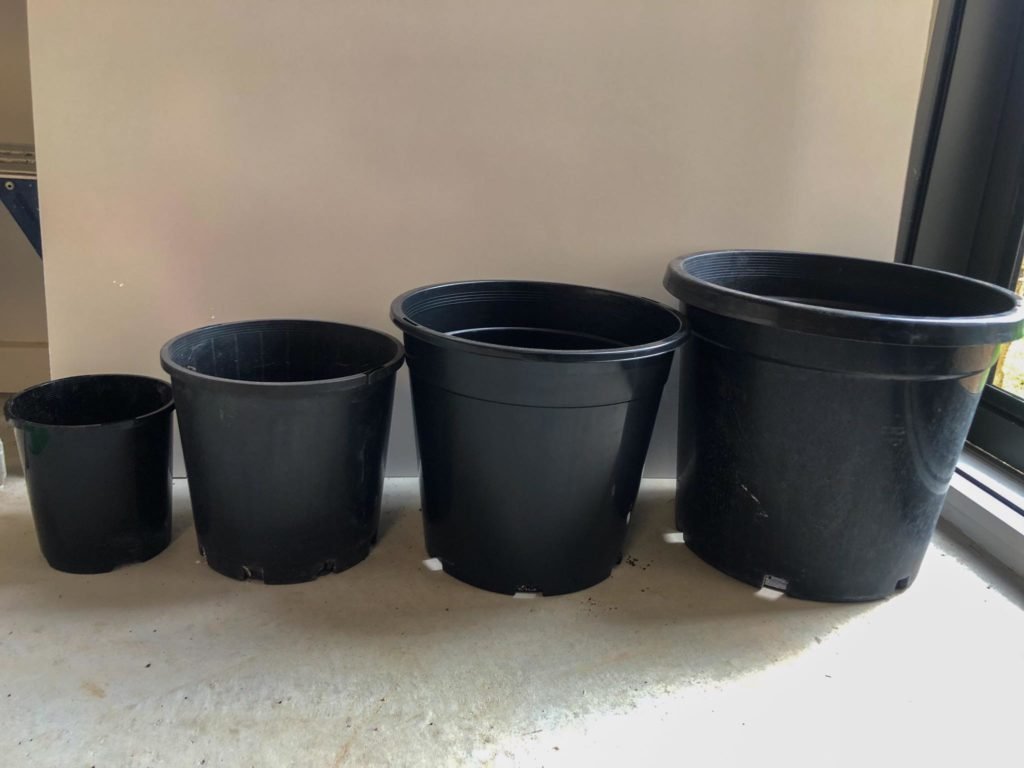
Choosing a new pot to plant your philodendron into is important. Choose a pot that is about 1 to 2 inches bigger than the pot your philodendron was in while making sure it has good drainage. Fill the pot with about an inch of a loose, well draining potting soil like recommended above.
Gently remove the plant from the pot. If the plant isn’t coming out easily, you can try gently squeezing the pot to try and loosen up the soil and then the plant should just slide out. While you have the plant out, it’s a good time to examine the roots just to look out for any diseases or discolouration. Roots of a healthy philodendron should be firm. Trim off any roots that are mushy and brown.
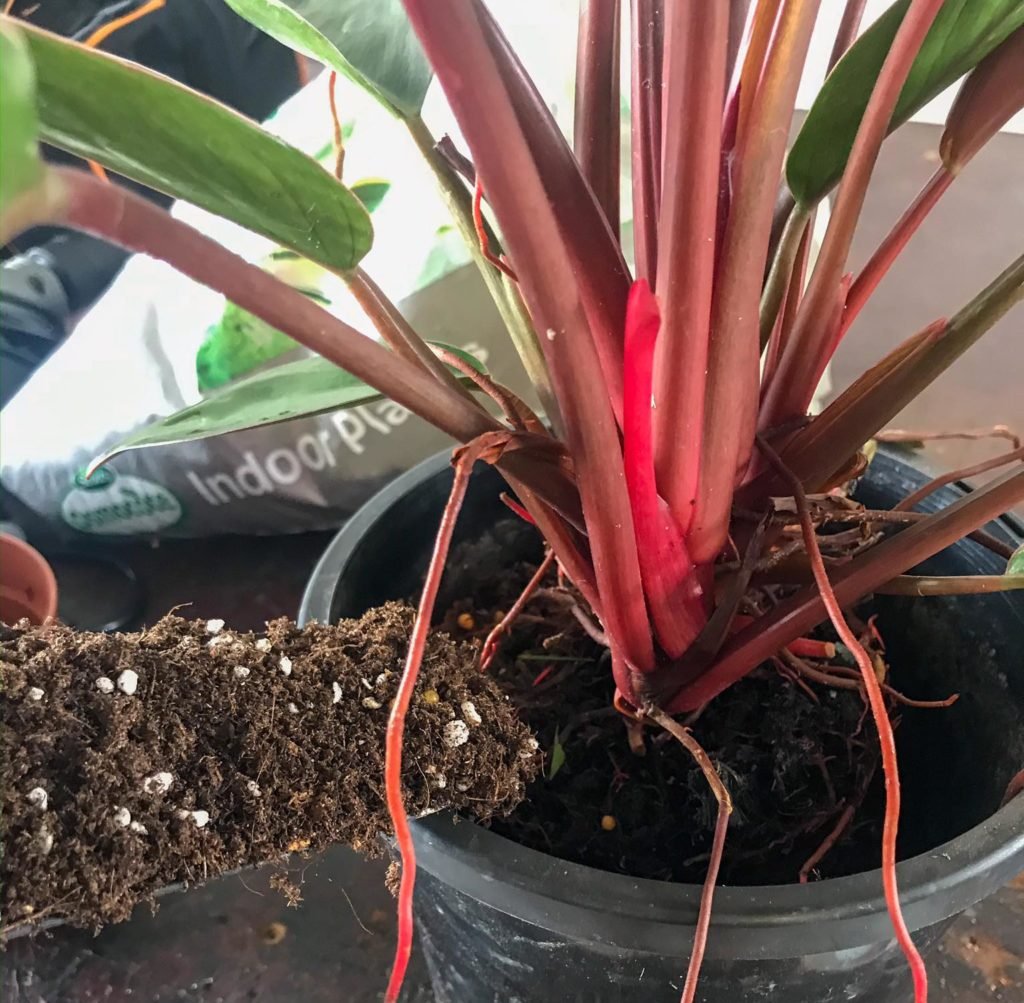
Place the philodendron into the new pot and continue to fill in around the plant with fresh soil until it reaches the same level as it was growing in the old pot. Gently push down the soil around the plant to eliminate any air pockets.
After you’re finished planting, don’t forget to water your plant. Water your philodendron until the water starts draining from the bottom of the pot and allow the water to drain completely.
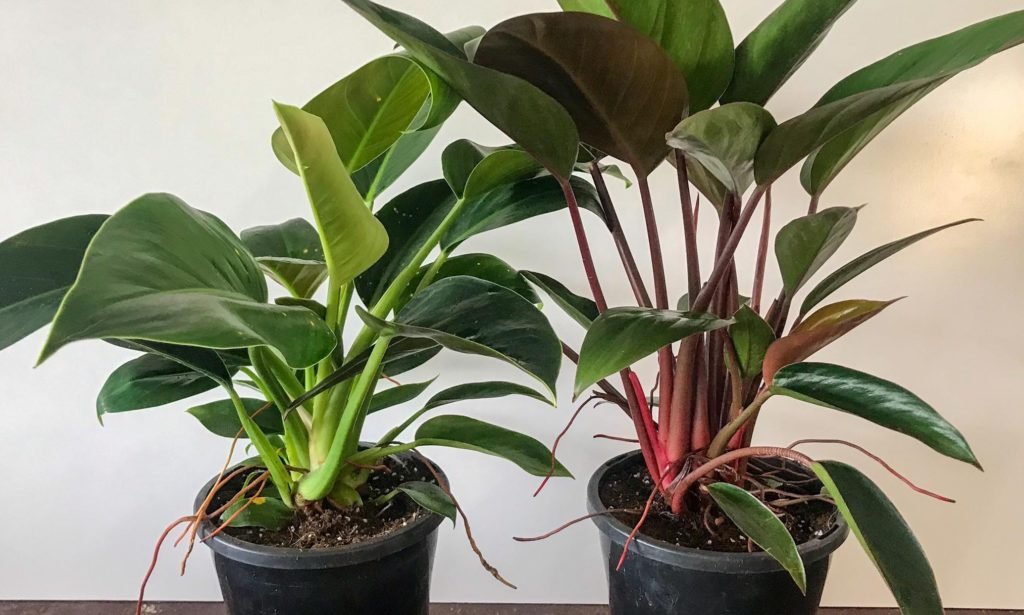
All done, your philodendrons new home should keep it healthy and growing for months to come. Make sure to check out our other articles on how to care for specific types of philodendron including but not limited to; Imperial Gold, Rojo Congo, Pink Princess & White Princess.


